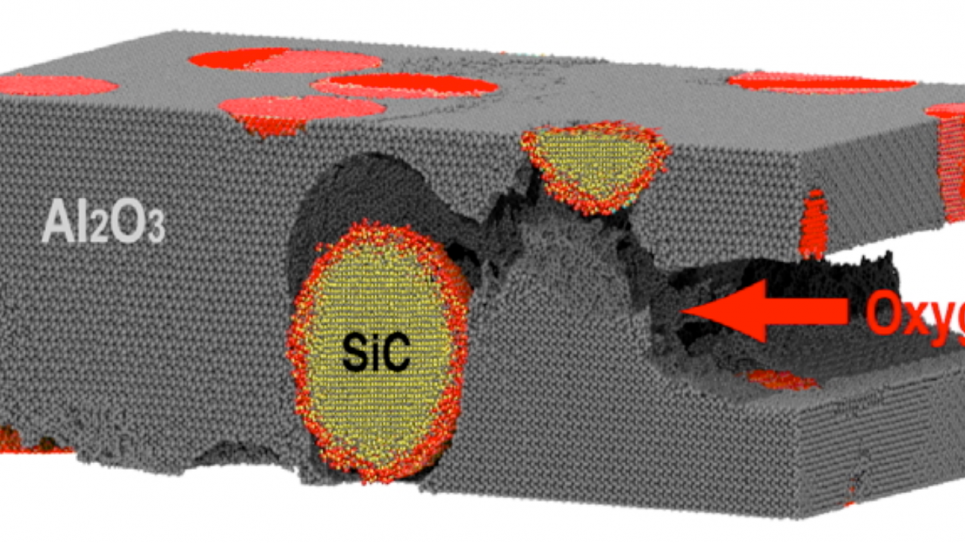
Petascale Simulations of Self-Healing Nanomaterials
Novel self-healing nanomaterials will play a vital role in the design of components for high-temperature turbines, wind and solar energy technologies, and lighting applications. These materials can significantly enhance the reliability and lifetime of such technologies while reducing manufacturing and maintenance costs.
For this INCITE project, researchers will focus on self-healing nanomaterial systems capable of sensing and repairing damage in harsh chemical environments and in high-temperature/high-pressure operating conditions. Specifically, they will be looking at anticorrosion coatings for metals and ceramic nanocomposites consisting of silicon carbide nanoparticles embedded in alumina and silicon nitride.
The research team will study the materials in great detail by performing petascale quantum molecular dynamics (QMD), reactive molecular dynamics (RMD), and mesoscale reactive dissipative particle dynamics (R-DPD) simulations. They will perform QMD simulations involving 104 atoms to shed light on the chemical and thermal aspects of self-healing processes. The team will also perform billion-atom RMD simulations to study: (1) how anticorrosion compounds in metal sponges and silica nanocontainers respond to changes in pH and temperature; and (2) how the size and spatial distributions of nanoparticles, temperature, and partial pressure of oxygen affect self-healing processes in ceramic nanocomposites.
Finally, the researchers will integrate these computational results with data from experiments at DOE facilities (Advanced Photon Source at Argonne, Spallation Neutron Source at Oak Ridge, and X-ray Laser Source at Stanford) to provide a comprehensive and efficient validation of simulations. This synergy is key to enabling a fundamental understanding of self-healing processes and to the discovery of new materials for extreme conditions.


